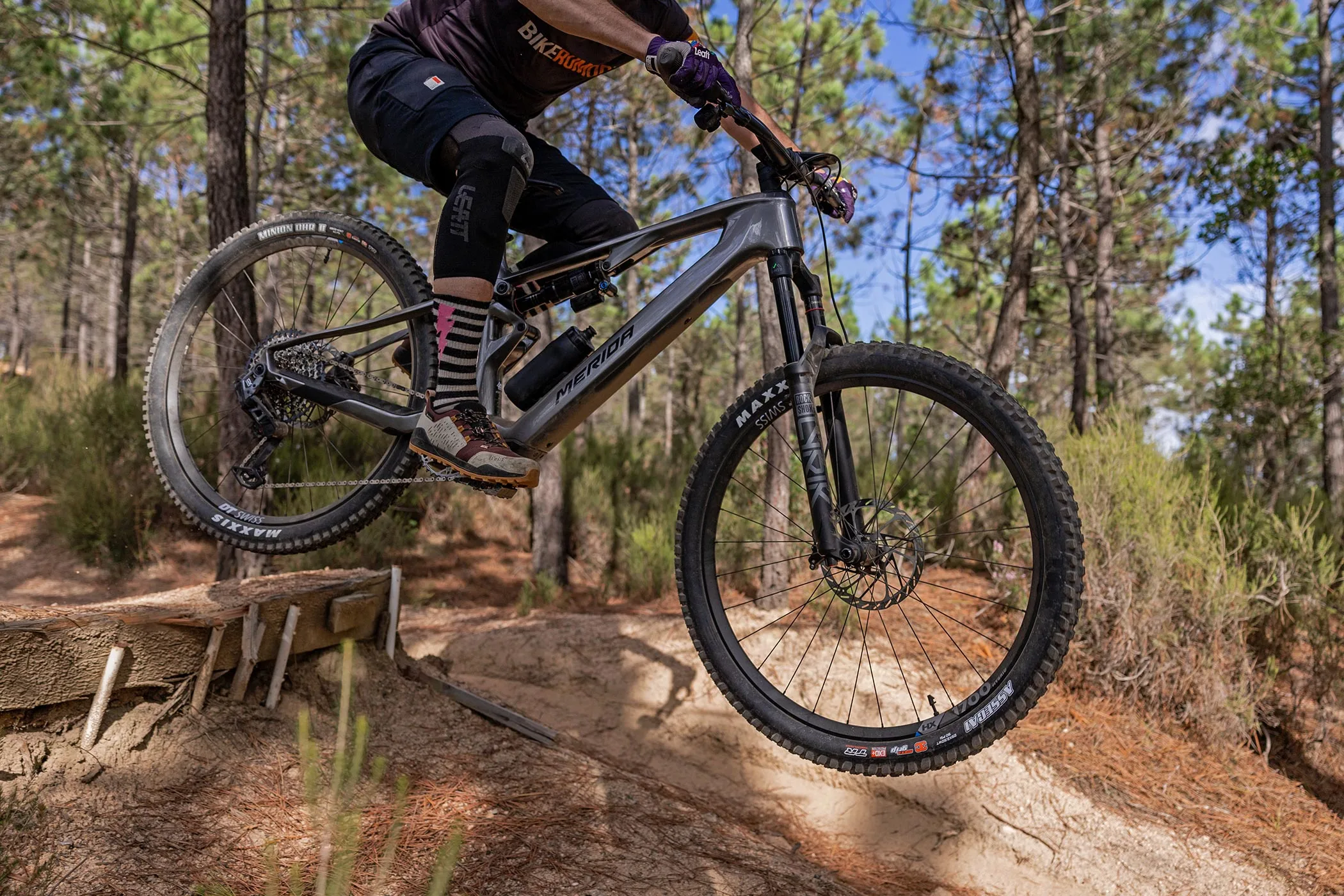Just over a week ago Merida launched their first real lightweight eMTB with the all-new eOne-Sixty SL powered by the Bosch SX ebike motor and a 400Wh internal battery. Mixing the smooth feel and ‘just enough’ power of the SX eMTB powertrain, Merida gives the e160 SL a full carbon frame with truly enduro-capable all-mountain geometry and 160mm of travel front & rear to create a do-it-all shredder for riders looking for ultimate lightweight and a more natural ride.
I spent a couple days riding this new light eMTB on familiar steep, loose & rocky trails in Catalonia, and came away truly appreciating an ebike that felt like riding a regular bike, just with several hours of fresh legs built-in!
First Rides on new lightweight Merida e160 SL Bosch SX eMTB
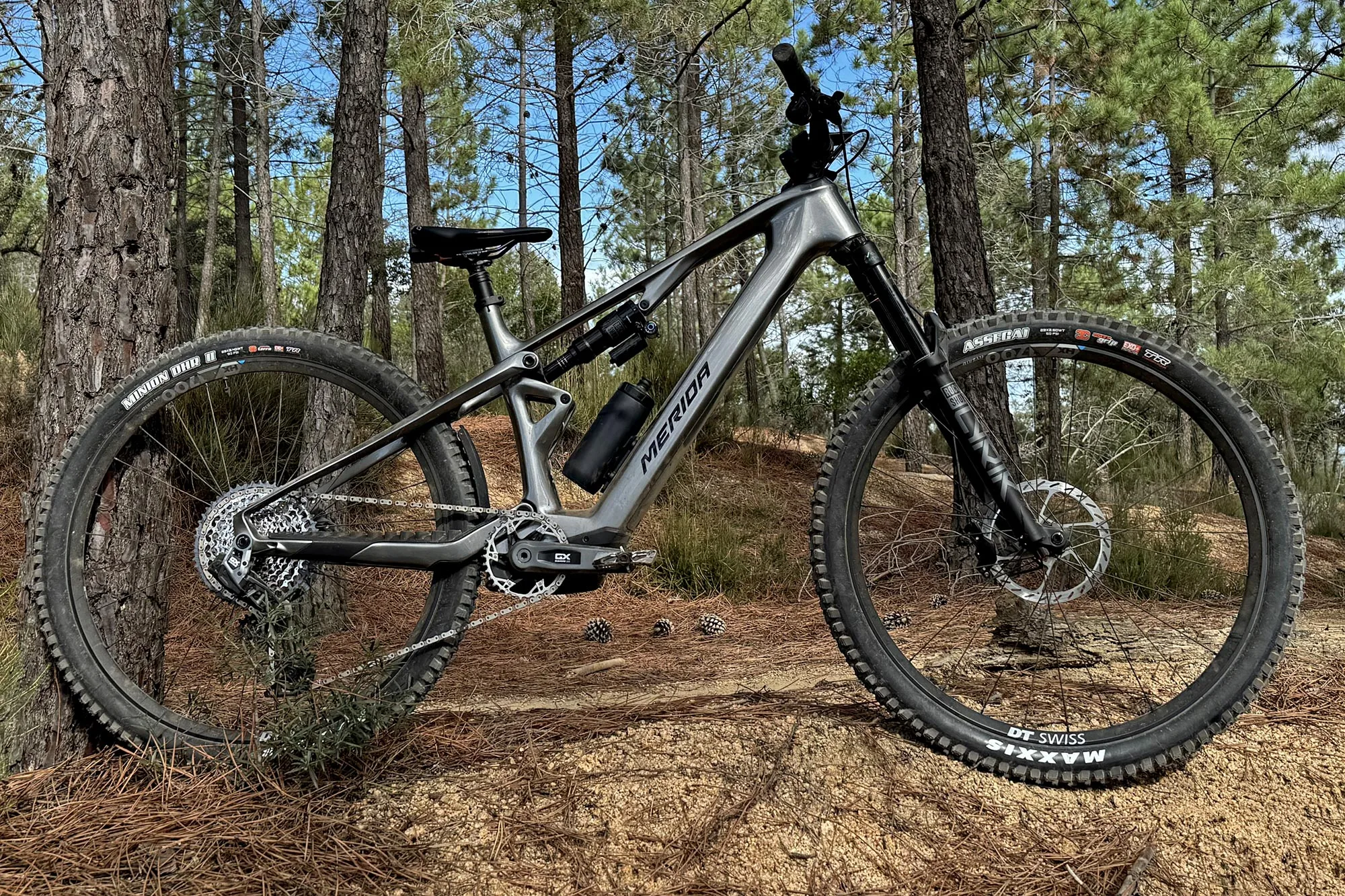
I’m a little torn over whether I should call this ebike the eOne-Sixty SL like Merida does on their website, or the e160 SL like is written on the top tube. But I’ll stick with the latter, if for no other reason than simplicity.
I feel like this new e160 SL is the real highlight of Merida’s 2025 move to Bosch. After years of Shimano pedal-assist power, Merida diversifies with their first move into Bosch motors. The Shimano-powered bikes aren’t going anywhere, but now German motor lovers get their options, too.
Together with this Performance Line SX-powered e160 SL, there’s a new Performance Line CX-powered e180 and a few base CX-powered eFloat commuters of various sorts. All come at a time as Bosch has seriously overhauled their premium performance ebike motors, while also adding the same small unobtrusive handlebar style mounted displays that Shimano has used for years.
Important details – Bosch SX
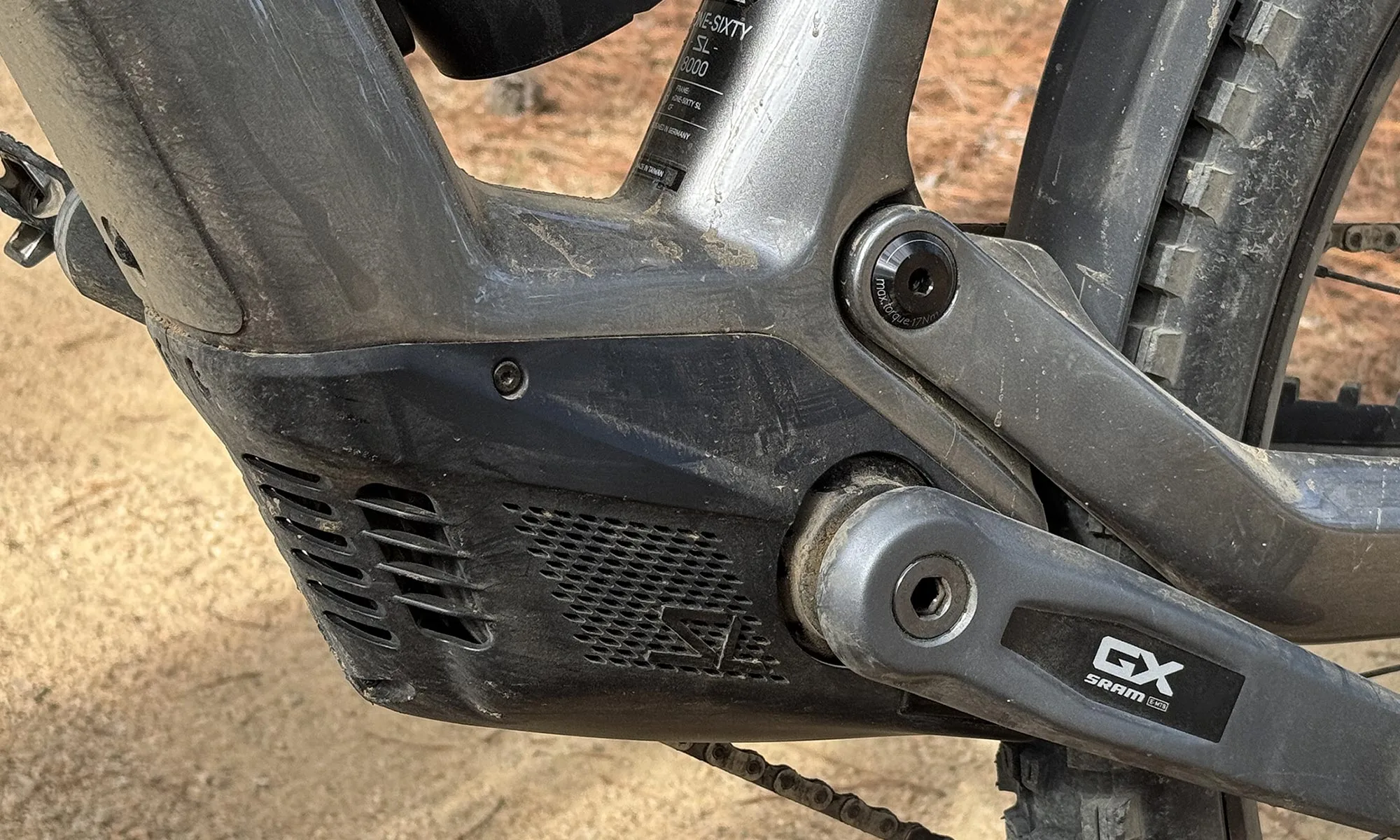
The heart of this e160 SL ebike then is the lightweight Bosch Performance Line SX motor that debuted last year, tucked under this custom plastic protector.
You get a nominal 250W ebike motor cranking out 55Nm of torque but at a claimed motor weight of just 2kg. That makes it 35% less torquey than the latest CX motor, and 40% lighter. But it still peaks at 600W of pedal-assist support – the same as the CX, making it double what you get out of a TQ motor, for example. The lower overall SX torque actually translates to less power drain, though.
So even though this Merida e160 SL only has a 400Wh battery inside, you’ll get a lot longer range than if you put that small of a battery into a CX-powered eMTB.
+250Wh if you need more
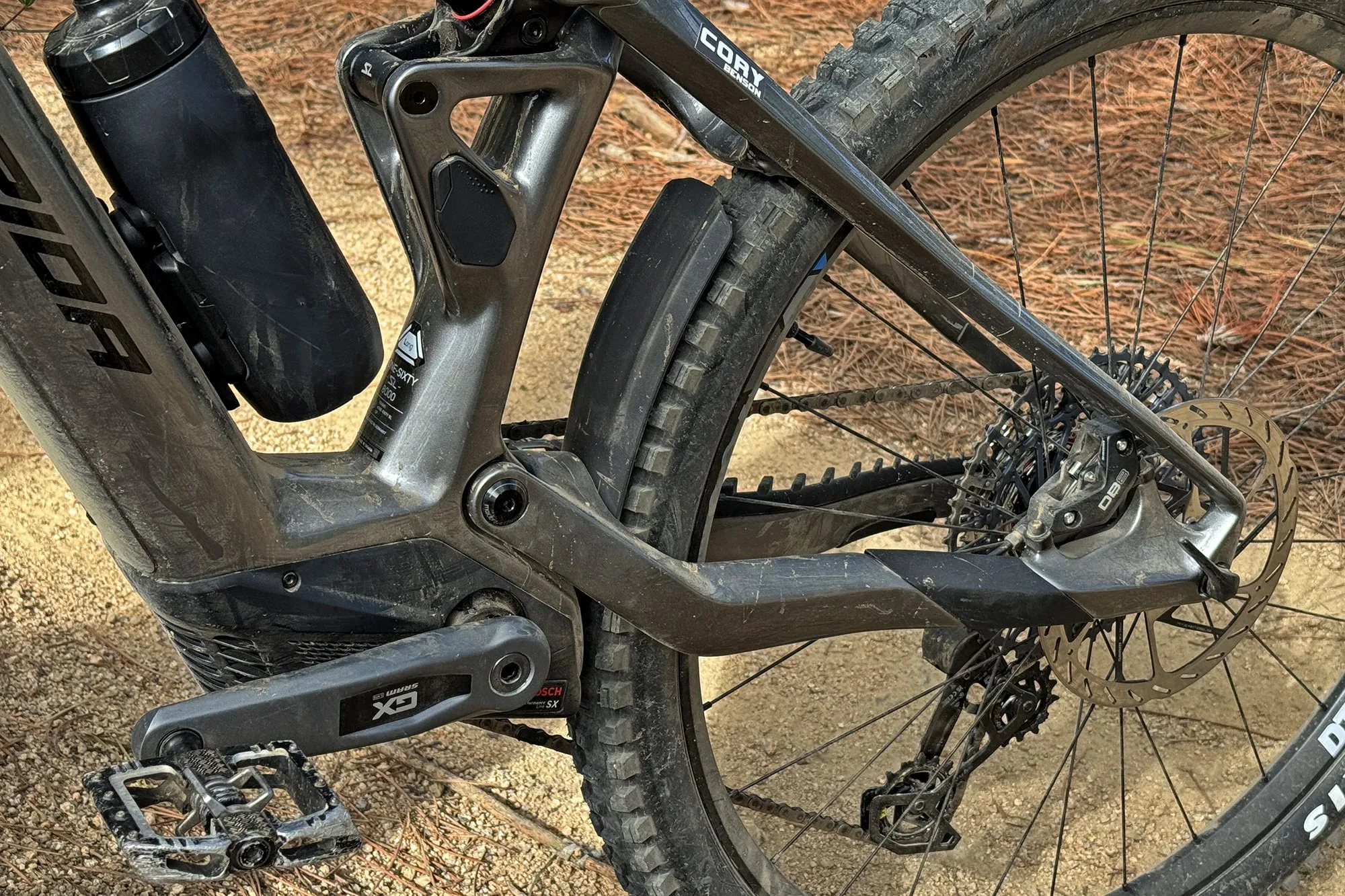
Yet still, if range anxiety is a concern, the Merida eOne-Sixty SL has its charging port right on the side of its seattube below the rocker link pivot. And you can strap an extra 250Wh Bosch PowerMore range extender external battery in place of the regular water bottle to carry you 62.5% further than without it.
In fact, I would probably recommend that everyone who buys this lightweight ebike plan to cough up another 400€ for that extra battery.
The greatest thing about this eMTB is probably how light it is and how that makes it handle more like a regular enduro or all-mountain bike. And I think the building 400Wh battery offers plenty of range for the majority of rides you’ll do on it – where you don’t want the penalty of an extra 1.6kg on every ride, when it’s usually not needed. But being able to increase your range by so much when you do plan on an all-day ride with more climbing than usual, just makes this a much more versatile ebike in the end.
29er eMTB with 160mm front & rear
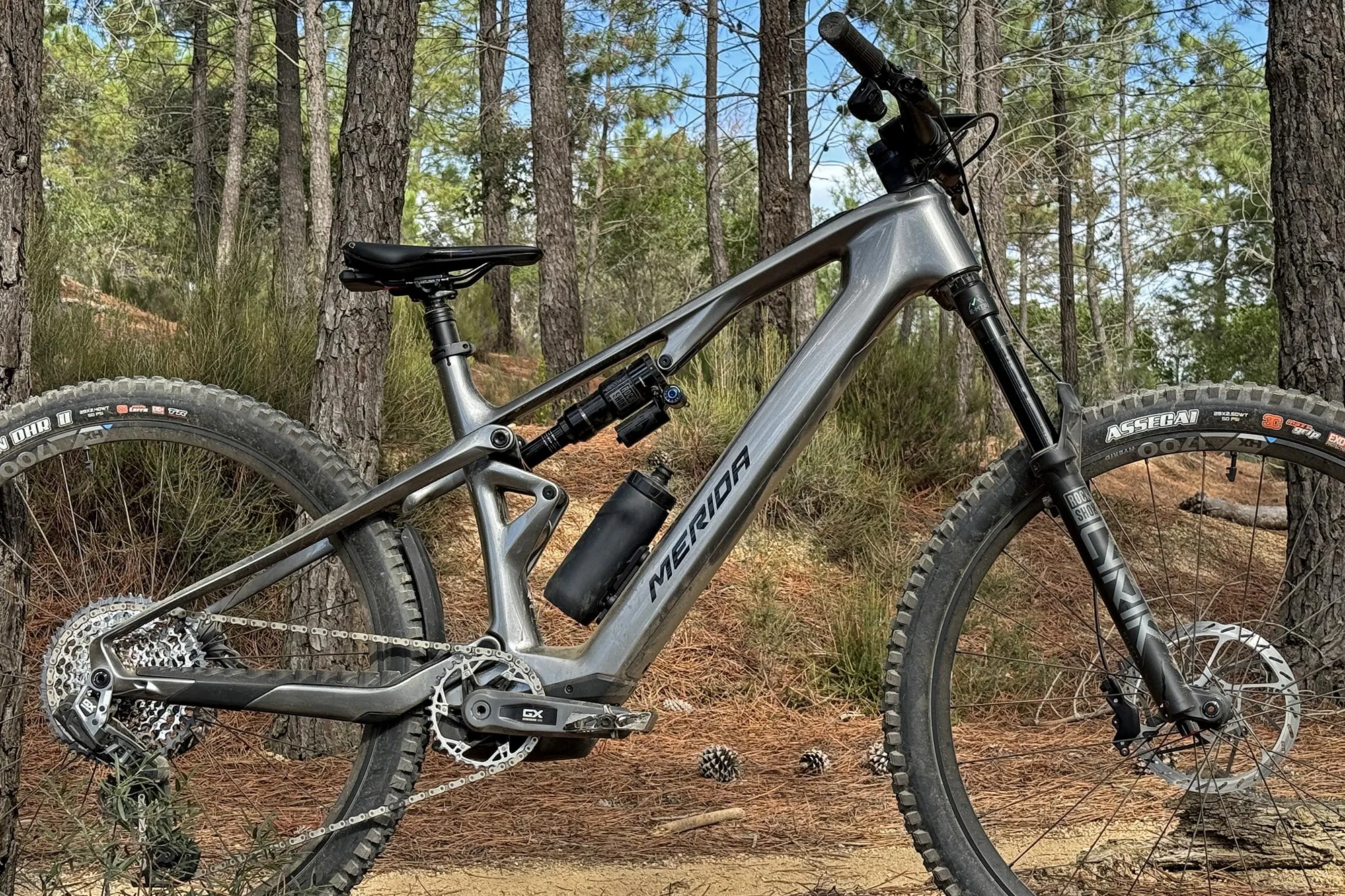
This new lightweight 29er Merida eOne-Sixty SL ebike gets 160mm of travel front & rear in a <2kg full-carbon frame with a simple linkage-driven single-pivot suspension design and flex stays that help keep it simple & lightweight. Or 174mm in the rear if you convert it to a mullet setup via the flip-chip and a 27.5 rear wheel swap.
It looks quite a bit different, but suspension kinematics-wise it’s quite similar to the new Shimano EP8-powered eOne-Sixty that launched last spring (which was actually already a mullet with 174mm of rear wheel travel paired to a 170mm fork). Plus, this new eMTB is about 3.5kg lighter.
With its new lighter weight, this SL eMTB even feels a bit more capable off-road too, even with the shorter fork travel. It does get a half a degree slacker headtube at 64°, the same ultra-steep 78.5° seat angle, 4mm longer chainstays at 450mm, and an extra centimeter of Reach to 489mm on my size Long test ebike.
So, it’s a bit longer and slacker for more stability. But it is lighter, so it’s much easier to hop and maneuver around on the trail – and still available in 5 Agilometer sizes (XS-XL).
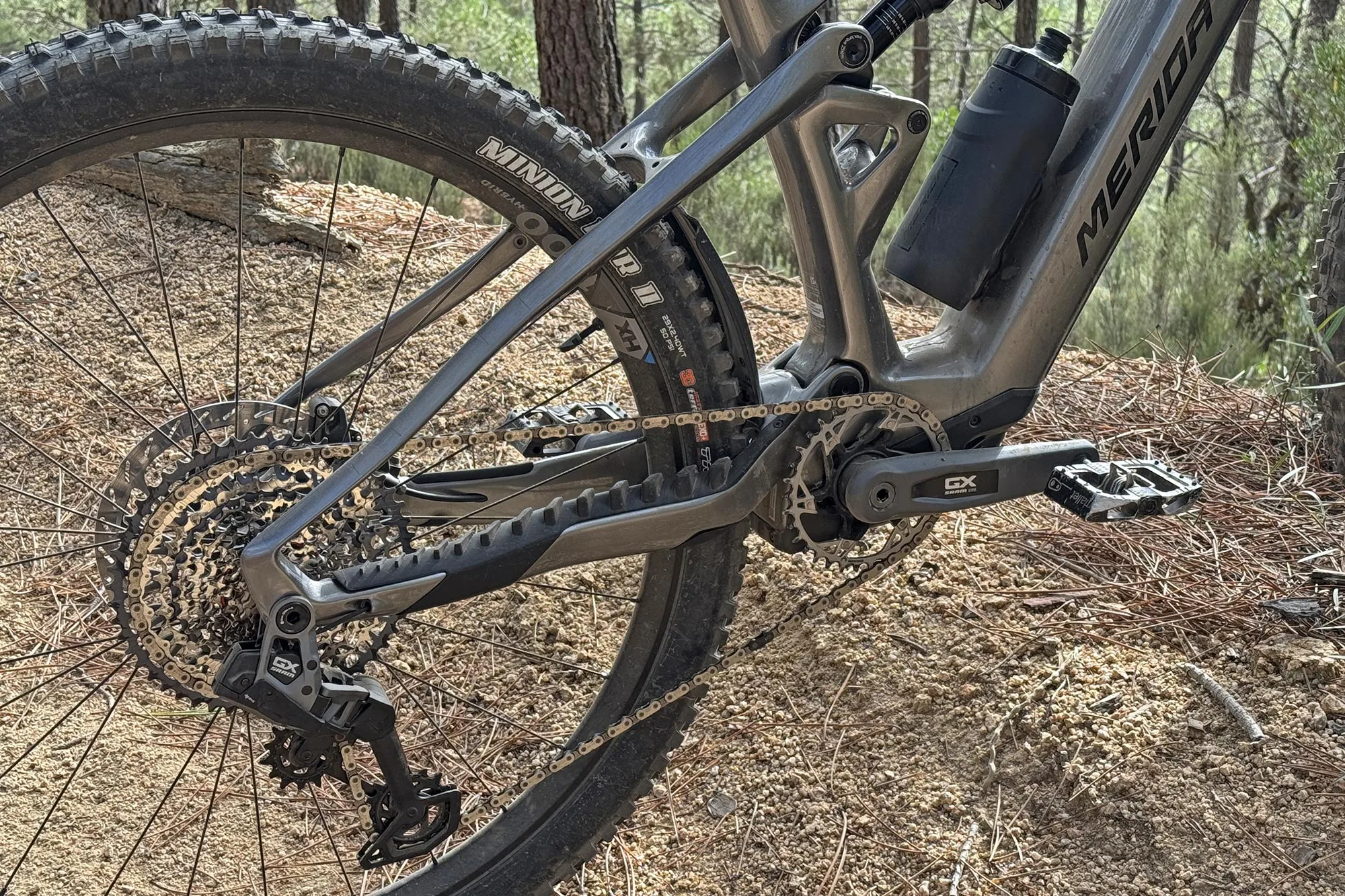
A few more key details… all the cables are routed in through the Wire Port cap on the Acros block-lock headset, and there’s an UDH out back. There’s a downtube protector, thick sculpted wrap-around rubber chainstay protector to silence the drivetrain, and optional short or long rear fenders to keep mud away from the main pivots.
The e160 SL has clearance for 29 x 2.4″ tires, and is rated for enduro Category 4 riding, anything shy of DH racing. Plus, Merida backs the carbon frame with a lifetime warranty.
Want more details? Check out my eOne-Sixty ebike launch story, here.
Actual weight
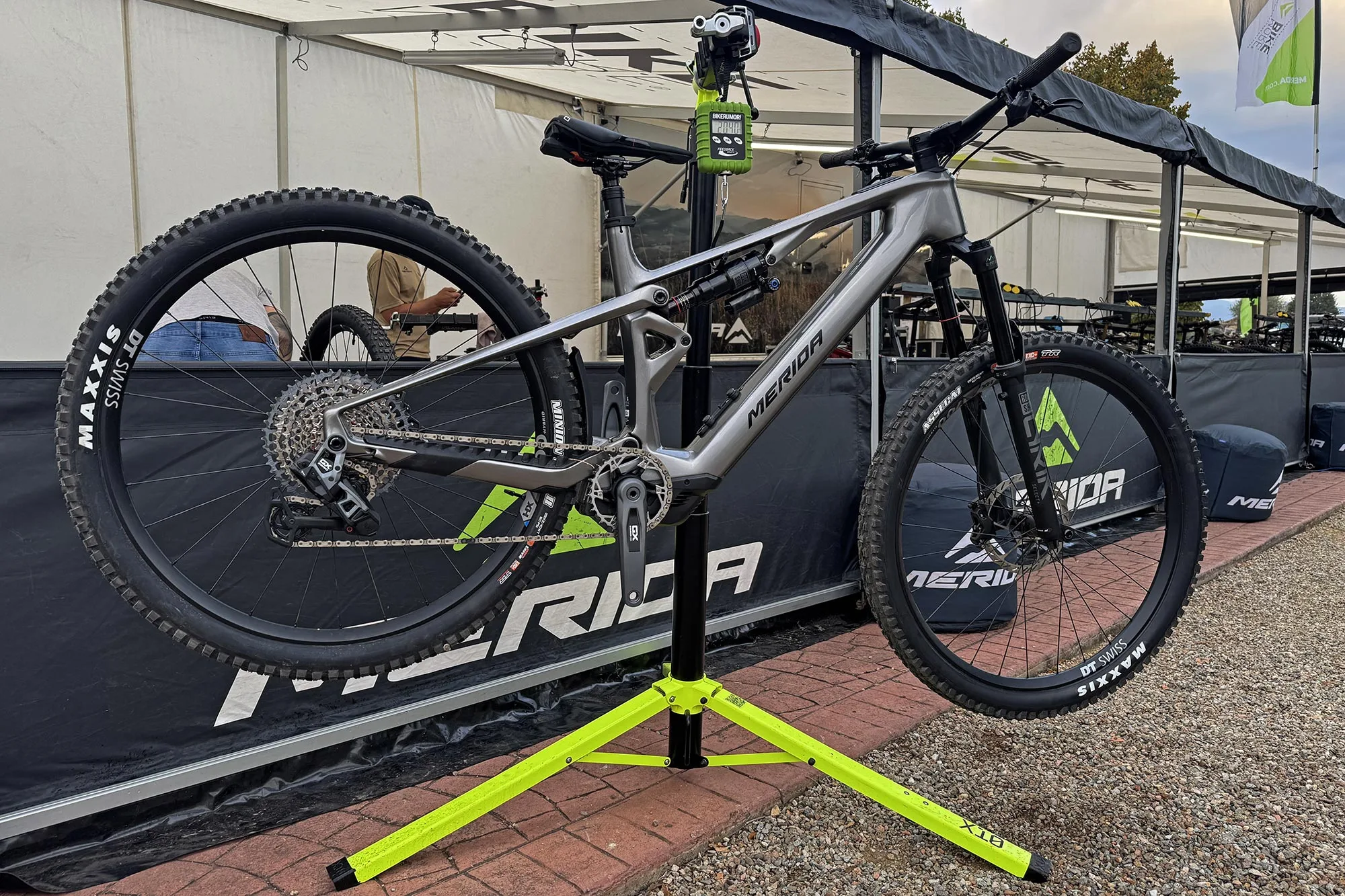
Okay, so the new Merida e160 SL 8000 that I tested in size L (Long or Large) weighs 20.4kg That’s set up tubeless without petals, but with the mini-tool strapped under its seat.
That’s not really light for a regular bike, but it is only about 2.5kg more than an entry-level pedal-it-yourself One-Sixty. And so for an ebike, it’s a pretty lightweight feel.
A lot of weight savings comes from that 400Wh battery in it, which is relatively small. But it still seemed to be plenty for what I was getting up to and riding.
So how does it ride?
Riding Impressions – Lightweight All-Rounder
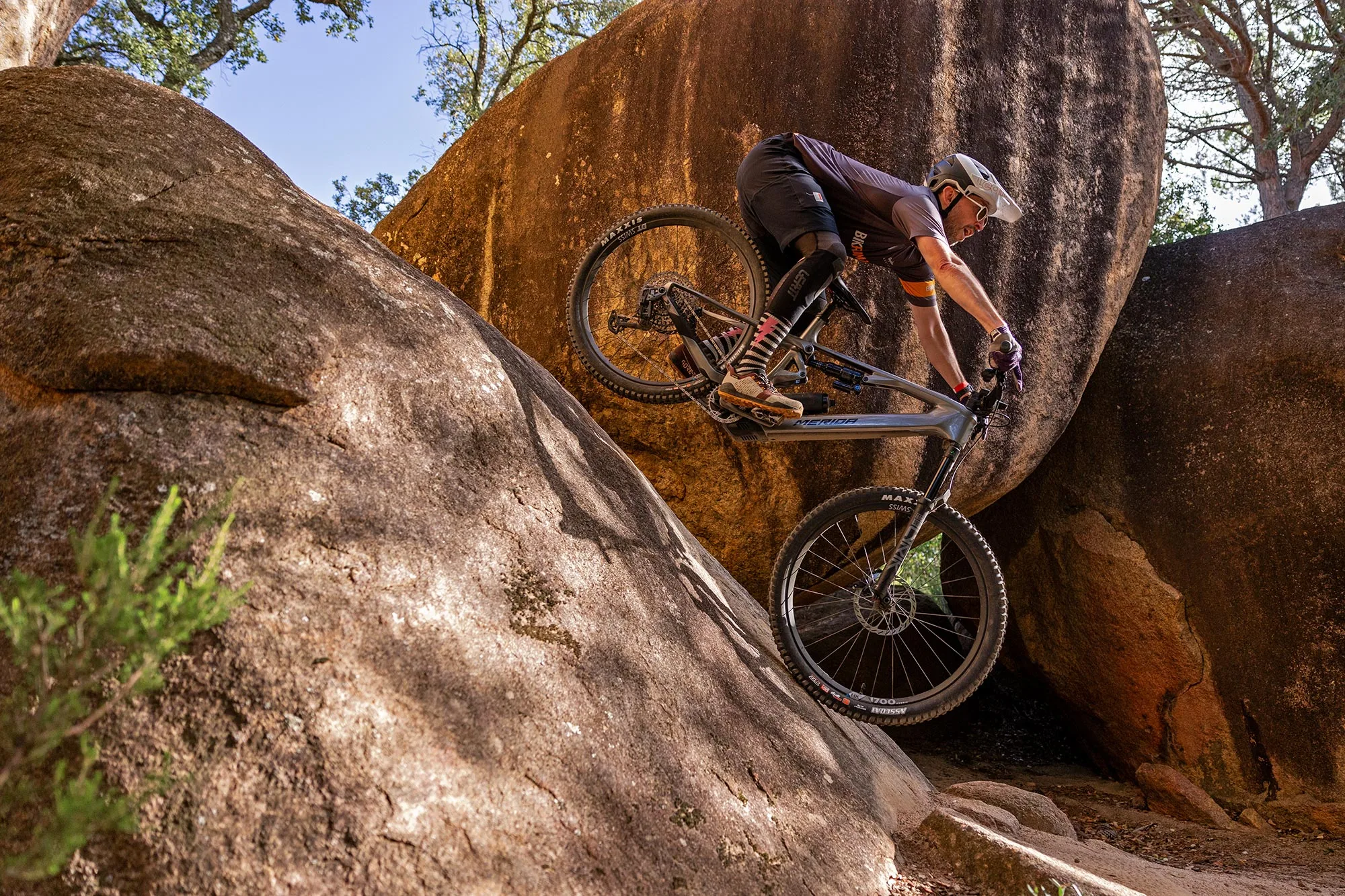
Merida describes this as an ebike meant to blur the divide between conventional regular bike riding and pedal-assisted ebiking. And it does that for sure. There’s no doubt that the Bosch SX powertrain makes you feel like you have fresh legs zipping up climbs easier than you probably should. And the complete package is still light enough that you go downhill without really feeling like being weighed down by a heavy, clunky ebike.
At just 20 kilos, it’s plenty light enough to still be maneuverable under you. This is an eMTB that’s easy to pick up and hop around on tight technical trails. And it’s really easy to get it off the ground. Riding a number of heavier, ‘full-power’ ebikes, I often feel I’m plowing into things, smashing through loose rock gardens, dragging through creek crossings. But not with this e160 SL. This ebike still feels light enough that you can pick lines easily, change direction effortlessly, and confidently tackle more challenging lines. It just feels much more natural.
But still plenty of power
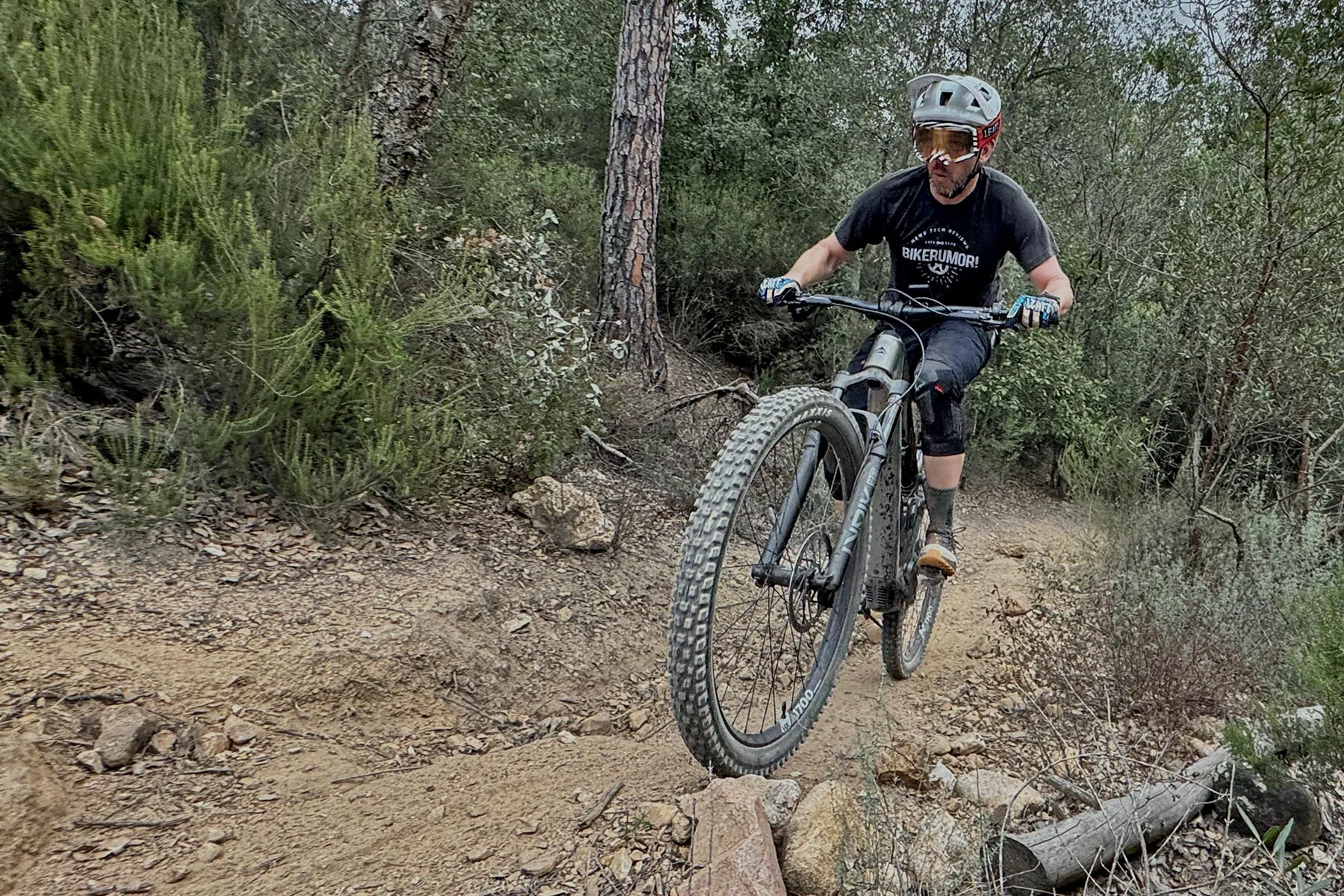
Going uphill though, yes, the Bosch SX motor is less powerful than its heavier-duty CX sibling. But still it offers that same peak power of 600W, even if the torque is lower. So it’s still feels like it’s going to carry you up some of the steepest terrain. Sure, its torque is about 40% less than the most powerful motors out there, so it won’t feel quite as zippy.
But to just make getting back up the hill a bit quicker, a bit easier, it definitely felt like plenty of zip for me. And that lower torque in the end actually does create a more natural ride – a feeling I prefer when getting pedal-assist.
Balancing battery & range
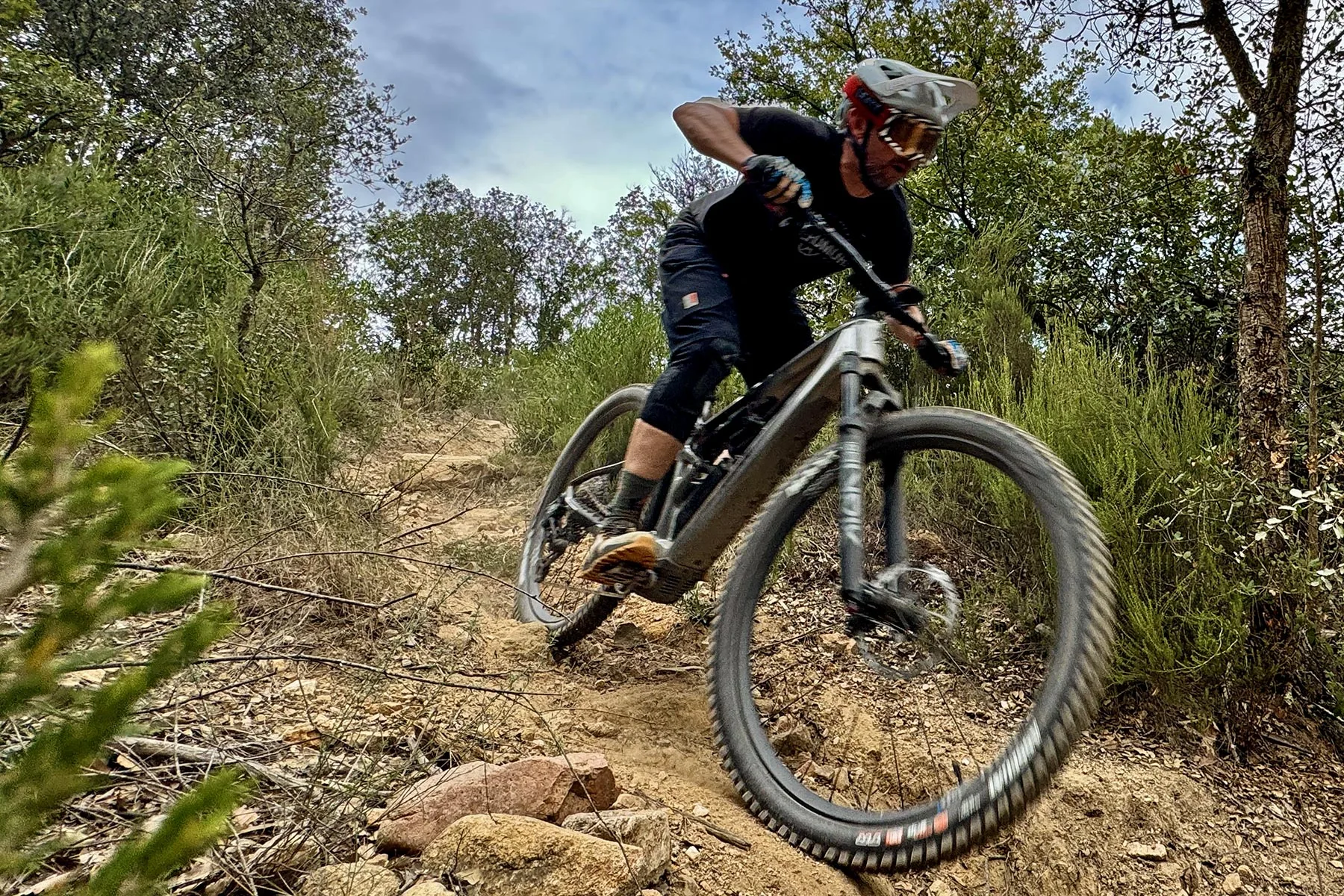
The SX setup kind of strikes a balance between really lightweight and full-power motor support. And it manages power well with the 400Wh battery to still deliver quite long range.
I (85kg) had no problem getting 2 solid hours of riding and 900-1000 meters of climbing out of this relatively small motor and small internal battery while pushing it hard, mostly in Turbo mode. Knocking it down to eMTB mode looked like it would get me about 10% more, or 50-60% more in Tour or Eco modes.
For sure, it won’t keep up all-day with full-power eMTBs with much bigger batteries if you head high into the mountains. But it’s definitely a compromise I’m willing to make in order to have that much better maneuverability and much more playful feel to the ebike – both when going downhill and especially carving the ebike through tight technical terrain & more flowy trails. Saving 3-5kg off many of the more powerful eMTBs out there, the e160 SL just creates a much more enjoyable feel that is much more like riding a mountain bike and less like lugging a heavy ebike up & down in the forest.
Going further & countering range-anxiety
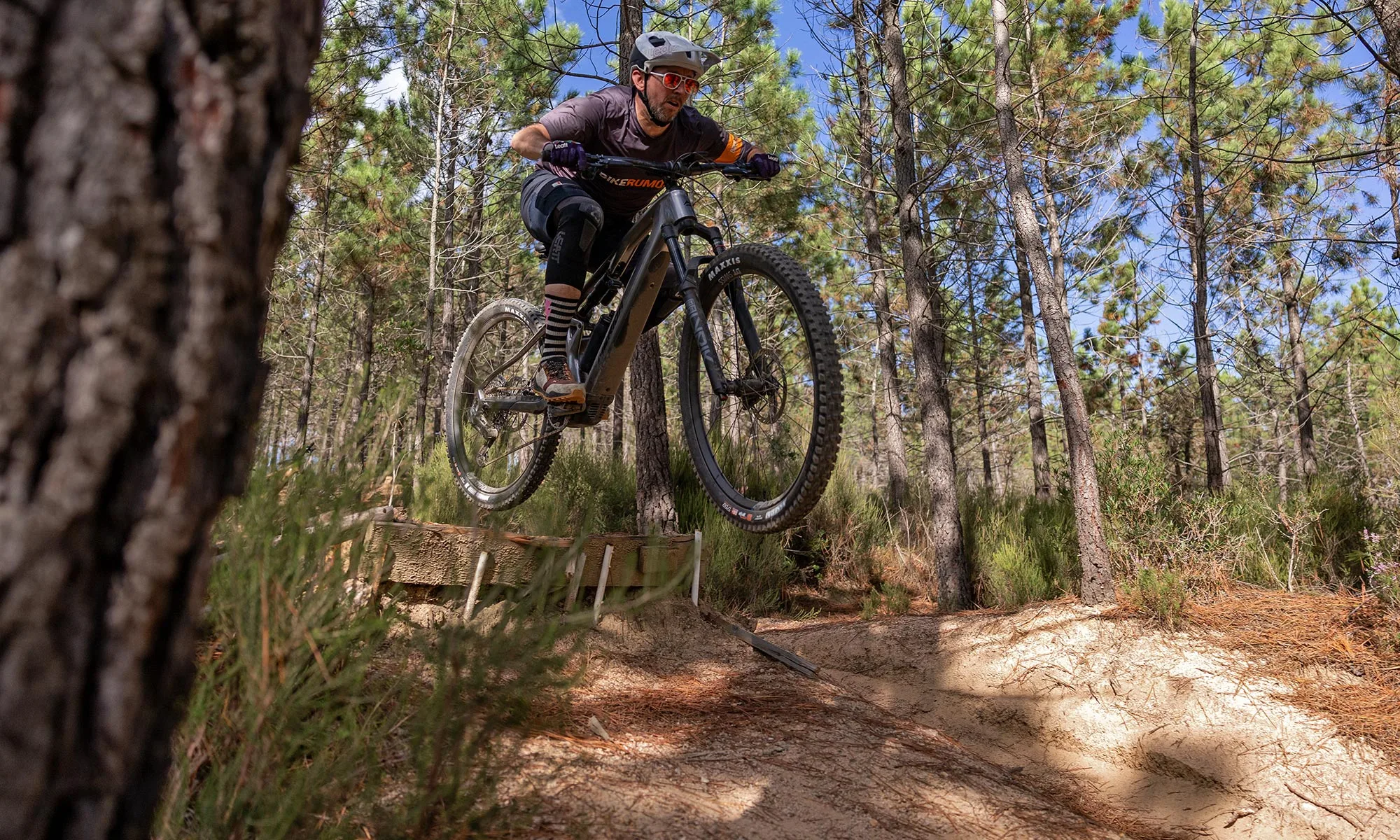
And I think it’s simply more fun to throw a lightweight eMTB off of jumps that it is a heavyweight ebike.
Now like I’ve already said, if you’re looking to ride further, you can just strap on a range extender battery. And while a 250Wh is a relatively small addition to a thousand Wh battery, when you’re already starting from just 400Wh, it’s a sizable boost. So you’re genuinely increasing your range by more than 60%! Of course, the one thing I don’t like is that the range extender takes the place of your water bottle, and on those longer ebike rides, you’re going to need more water, too. So, you’ll just have to accept wearing a hydration pack.
Hiccups
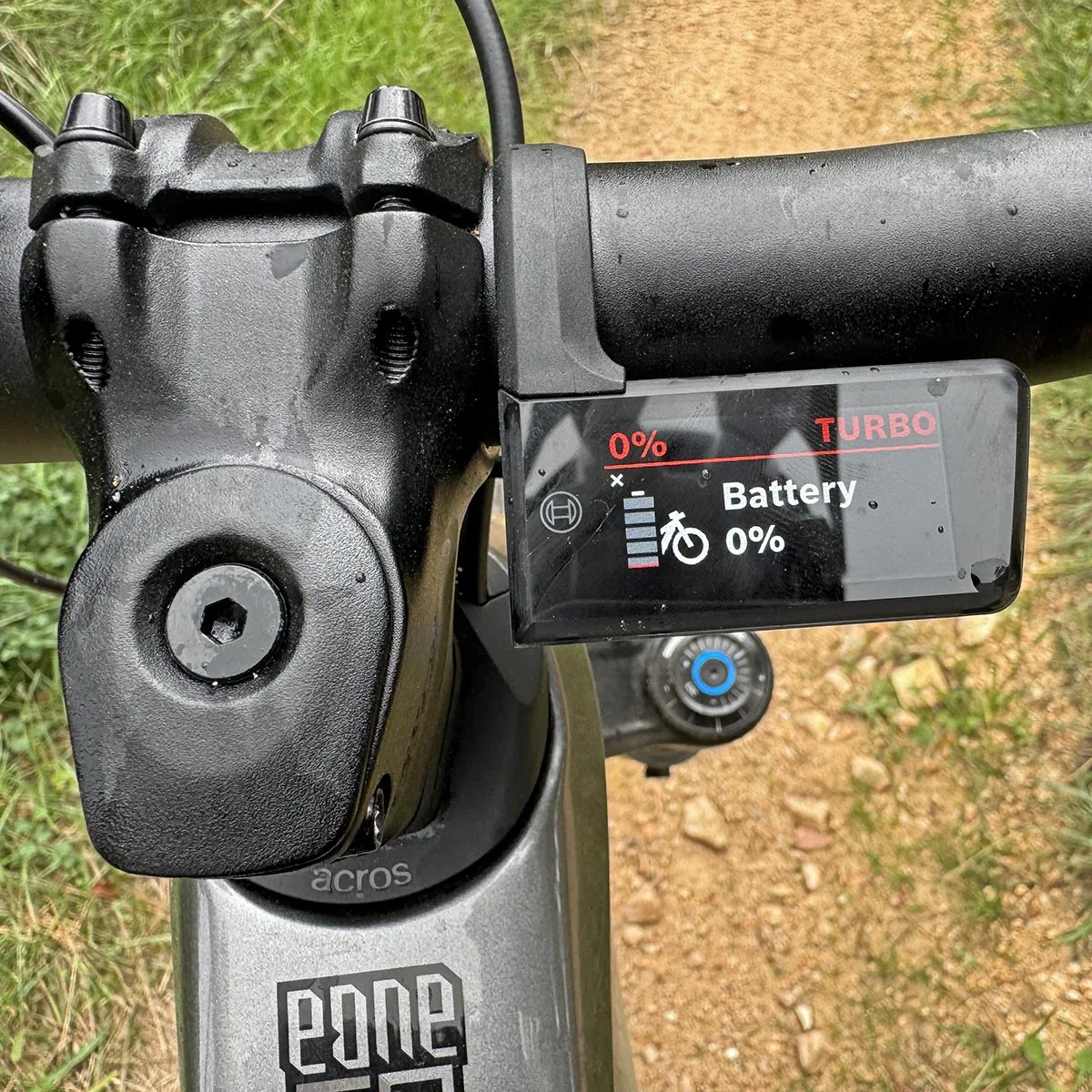
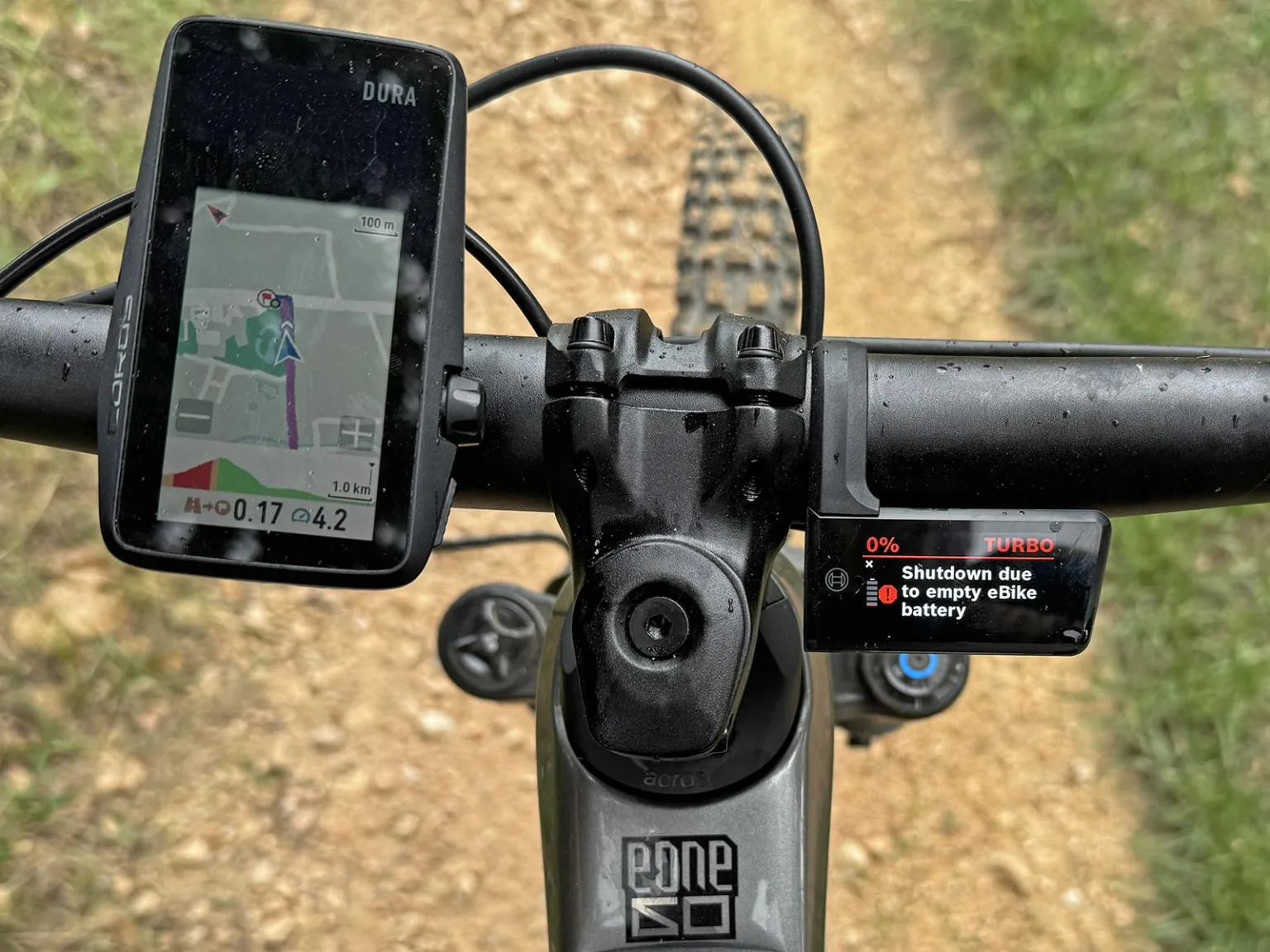
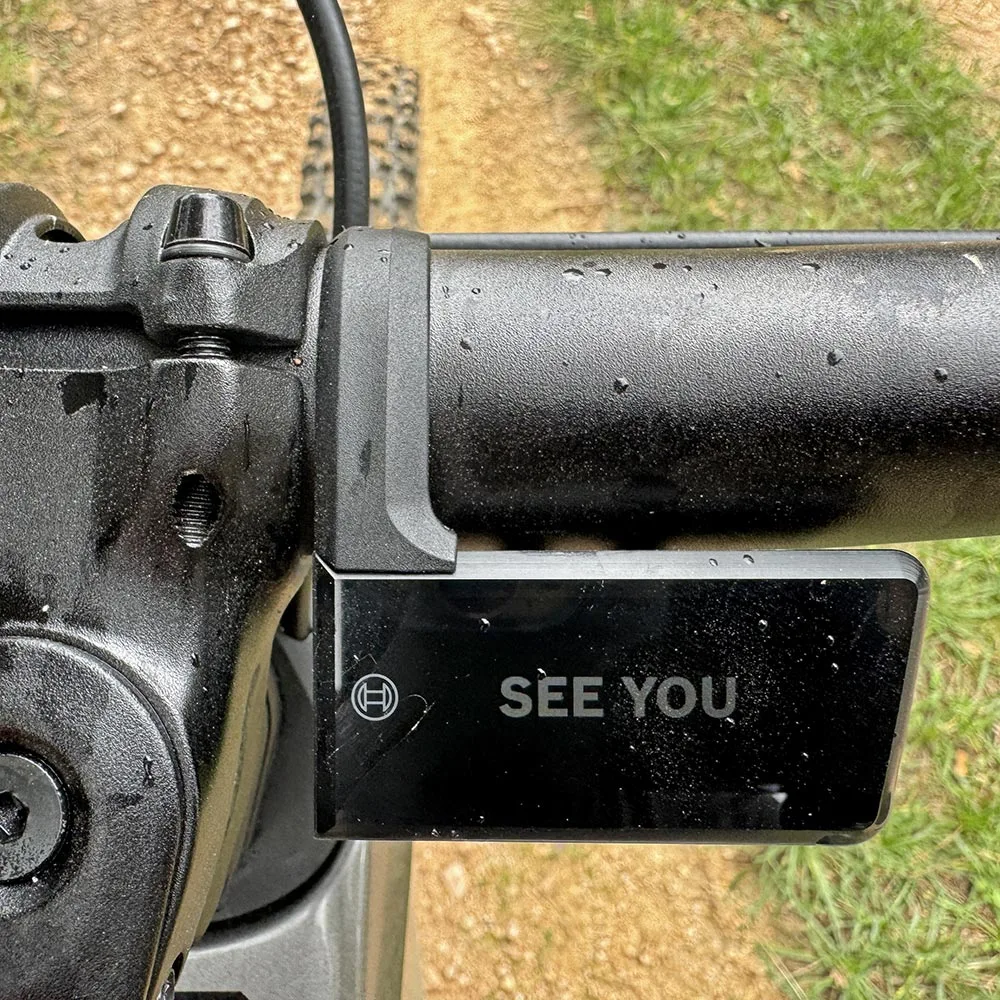
One recent Bosch update that I can really get behind is their new Purion 400 display (which looks a lot like Shimano’s similar Di2 & ebike display). It simply puts useful ebike info in an easy-to-see spot and lets the rider cycle through whatever you prefer to focus on – estimated range, speed, cadence, assist level, ride stats, etc. It’s simply much more informative than the LED indicator bars that Bosch puts on your toptube. Although sometimes it gives bad news, as well.
The one issue I had tested this Merida e160 SL 8000 was that this model includes a wired-in SRAM AXS transmission rear derailleur. While that would normally be wireless, here it’s powered directly from the ebike’s battery. But the Bosch system & SRAM don’t talk. So ultimately, when you get to 0% battery on your motor, you have 0% battery in your derailleur, too. That means when you run out of battery for the ebike, you run out of the ability to shift. It shuts down, and you’re left in whatever gear you’re in. To be fair, you get a decent warning, it runs on 0% for a bit. So definitely, when you see your ebike hit 0%, you should just turn off any pedal-assist to still get more shifting. But once it shuts down, that’s it. Yes, you can start it back up for a second and probably get a couple extra shifts out to get back to a pedal-able gear. I was able to, but your results may vary. And ultimately, it’s going to shut down again with its lovely Bosch message of “See You” at the end.
But easy enough to fix…
My recommendation if you get any Bosch ebike with a wired-in SRAM derailleur is just to buy an extra AXS battery to carry as a spare so you don’t ever have to worry about it again. It’ll cost you about 60€ and weigh <25g. Surely worth the peace of mind.
Parting thoughts
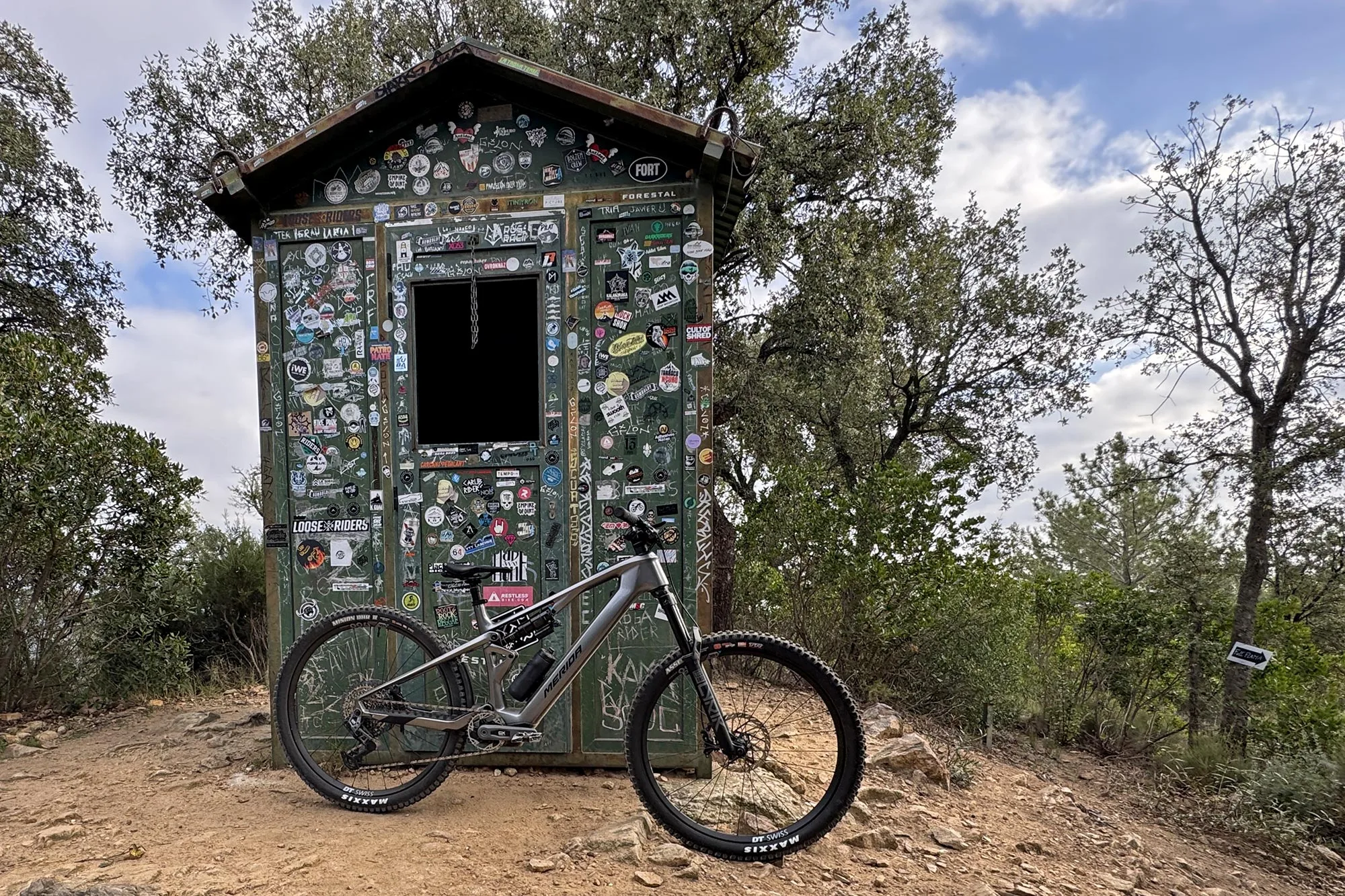
What I come away with is that this new e160 SL is my favorite Merida ebike, yet. It actually rides a lot like the regular 160s, which I liked a lot for the it simple, playful ride, and great slack & capable geometry.
The Merida e160 SL is not super long travel, so it’s not really e-Enduro. Although its geometry is really trying to emulate full-on enduro bikes. But it’s much more of an e-All-mountain shredder type of thing. But with light weight, long reach, long chainstays, a slack 64° head angle, and Merida’s characteristically steep seattube angle, you can comfortably ride this thing down just about any trail. And with plenty of eMTB motor support, you can get back up just about any trail, too.
It’s probably the most versatile e-mountain-bike that Merida has made. And at this light weight and natural ride feel, it really just handles so much like a regular bike that it’s just fun for all types of trail riding and makes you feel like you always have fresh legs.
